Urban areas have long been associated with concrete jungles, high-rises, and limited green space. However, urban agriculture has gained popularity as more people become interested in sustainable living and local food production. A greenhouse is designed to create an ideal growing environment by controlling temperature, humidity levels, and light exposure.
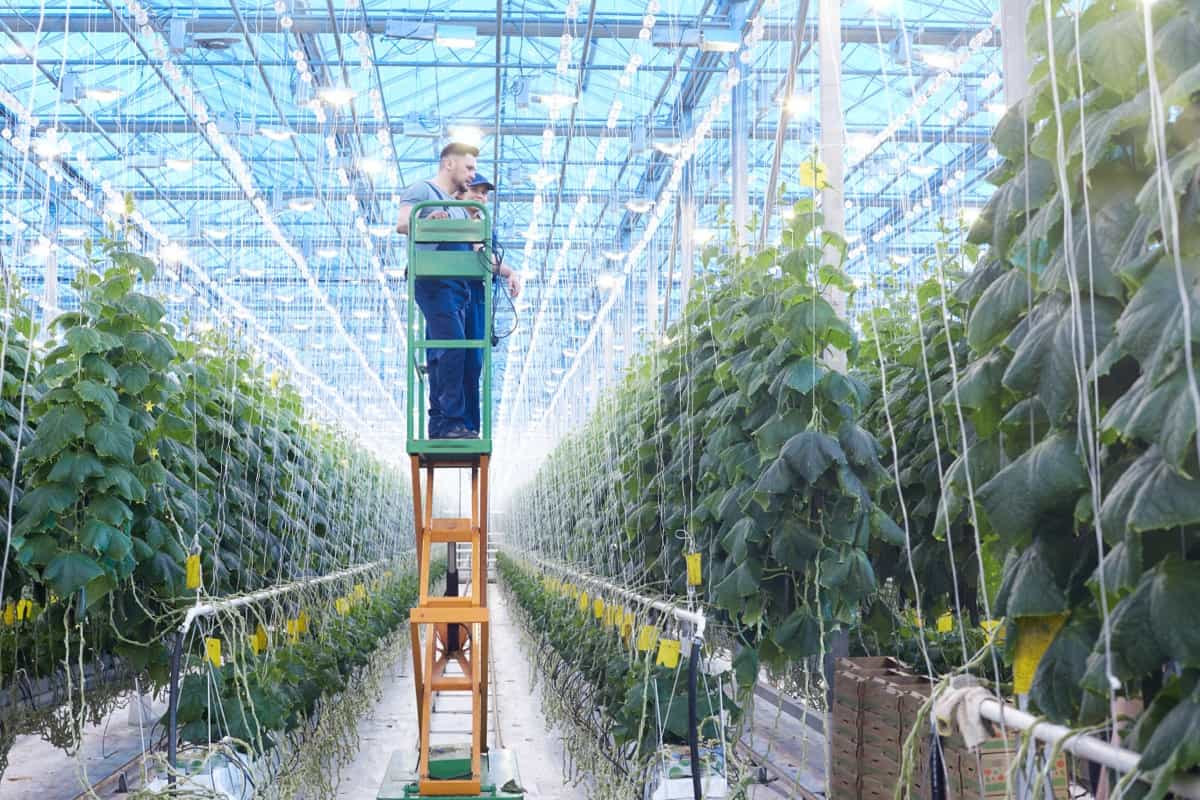
With a greenhouse in your backyard or on your balcony, you can grow fresh fruits, vegetables, and herbs all year round. Introducing greenhouse growth to urban areas can be challenging due to limited outdoor space and the need for adequate sunlight. Greenhouses come in various sizes and designs, from small window-mounted units to commercial-scale structures, making them accessible to gardeners of all experience levels. Let’s check out more information on Greenhouse growing for urban areas below.
Small-Scale Urban Greenhouse Growing Techniques
When it comes to urban gardening, space is often limited. However, that doesn’t mean you can’t enjoy your garden’s fresh produce. Small-scale greenhouse growing techniques involve creating a compact and efficient plant cultivation system in an enclosed structure. This approach allows you to grow vegetables and herbs year-round without worrying about outdoor weather conditions or pests.
One popular method for small-scale greenhouse growing in an urban environment is container gardening. Using pots or other containers, you can create a vertical garden on a rooftop. Another technique involves building mini-greenhouses that fit into tight spaces like alleys or side yards.
In case you missed it: Cleaning Tips for Your Greenhouse: Best Time to Clean and Common Mistakes
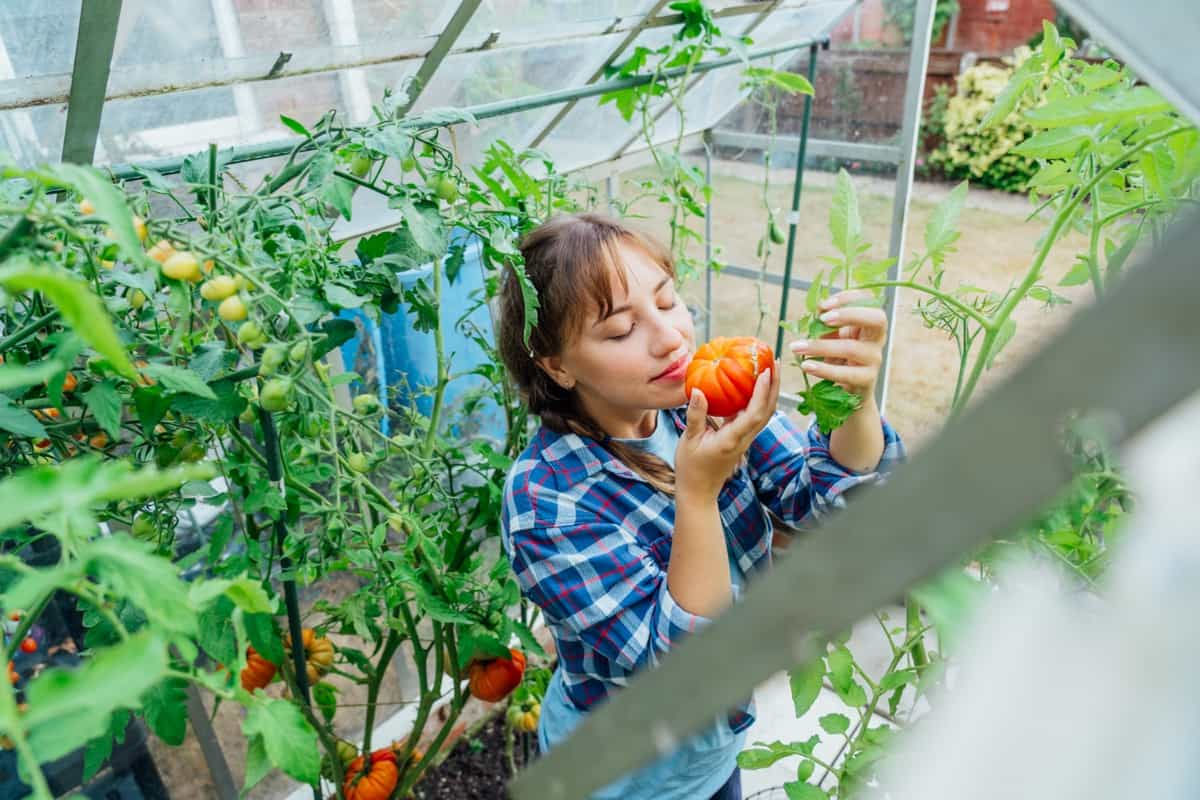
These structures are designed to be portable so they can be moved around as needed while still providing ample sunlight and protection from the elements. In addition, aquaponics systems enable growers to cultivate fish and plants simultaneously in one compact unit by continuously recycling water through the system.
Indoor Greenhouse Growing for Urban Areas
Indoor greenhouse growing is an excellent option for urban spaces where outdoor gardening may not be feasible. With limited city space, indoor greenhouses can provide a controlled and protected environment to grow plants year-round. One of the main benefits of indoor greenhouse growing is that it allows you to control all aspects of plant growth, from temperature and humidity to light exposure and air circulation. This level of control ensures optimal conditions for your crops, leading to higher yields and better-quality produce.
Choosing the right lighting system is crucial when setting up an indoor greenhouse. LED lights are energy-efficient and customizable, allowing you to adjust the spectrum and intensity based on your plants’ needs. Additionally, hydroponic systems can be used with indoor greenhouses for even more efficient use of space. Another advantage of indoor greenhouse growing is that it eliminates many pests and diseases common in outdoor gardens.
Without exposure to external elements such as insects or extreme weather conditions, your crops have a much higher chance of thriving. Indoor greenhouse growing provides urban gardeners a practical solution for year-round crop production within limited space constraints. By controlling environmental factors such as light exposure and temperature while using hydroponic systems, when necessary, growers will ensure healthy yields without fear of pests or diseases disrupting their harvests.
Sustainable Greenhouse Growing Methods in Cities
Sustainable greenhouse-growing methods are essential for maintaining an environmentally-friendly approach to urban agriculture. One of the primary ways to achieve sustainability is through efficient energy consumption. Urban farmers can reduce their reliance on non-renewable resources by incorporating renewable energy sources like solar panels, wind turbines, and geothermal heating systems into greenhouse designs.
Another sustainable technique is using organic fertilizers and pest control measures. Natural ventilation and shading techniques can help regulate temperature and humidity while reducing energy costs. Water conservation is another crucial component of sustainable greenhouse growth in cities.
In case you missed it: 12 Common Greenhouse Gardening Problems and Solutions: A Beginners Guide
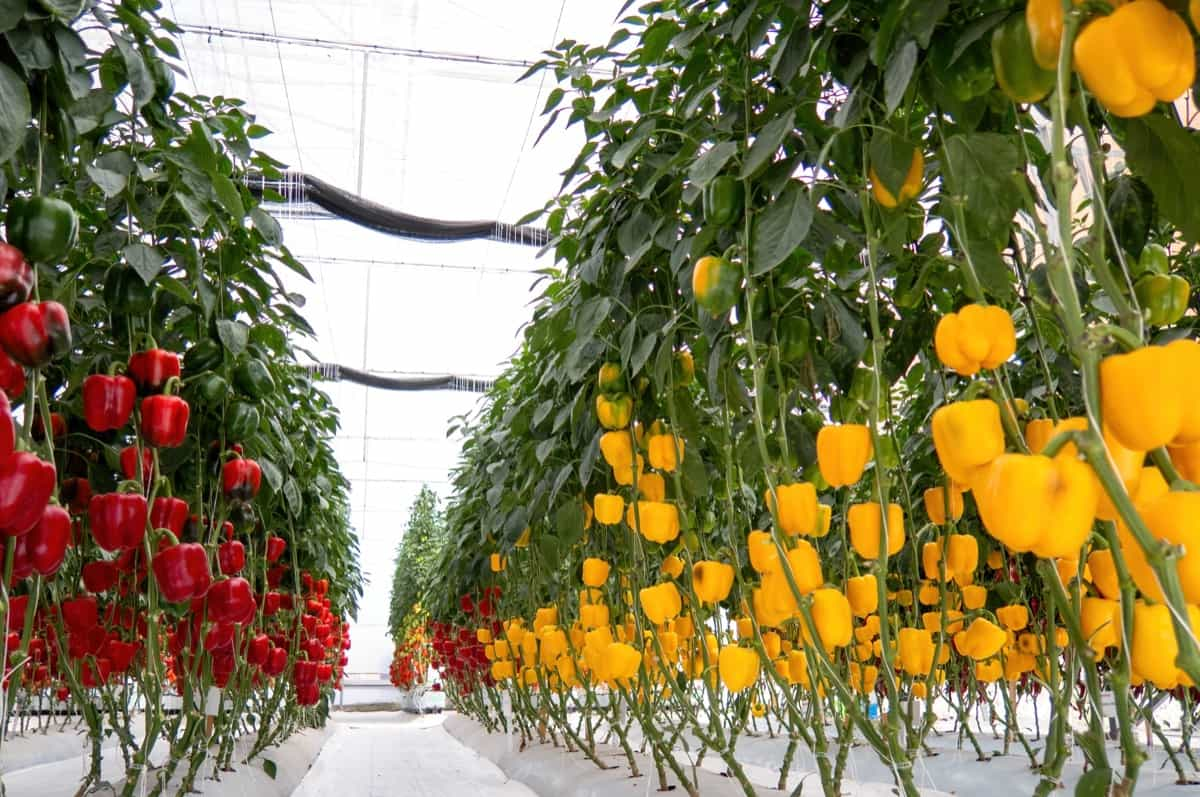
Collecting rainwater or recycling gray water for irrigation can significantly reduce water usage while promoting more responsible water practices. Utilizing companion planting techniques that encourage biodiversity can help maintain a balanced ecosystem within the greenhouse environment without relying solely on chemical interventions for pest control.
Vertical Greenhouse Growing in Urban Areas
Vertical greenhouse growth is a popular technique for maximizing space in urban areas. In cities, vertical gardens grow plants and vegetables in limited spaces, such as balconies or rooftops. Vertical farming makes growing more produce in less area possible by stacking planters on top of each other. The benefits of vertical greenhouse growing include increased crop yields, reduced water usage, and improved air quality.
It also allows city dwellers access to fresh, locally grown produce without transportation. Many approaches can be taken when implementing a vertical garden system. One option is hydroponic growing, which uses nutrient-rich water instead of soil. Another approach uses aeroponic systems where the mist is sprayed onto roots suspended in the air.
Lighting is important in successful vertical greenhouse growth, as most crops require adequate sunlight for healthy growth. Therefore, artificial lighting may be necessary during certain times of the year or if the plants are located indoors. Vertical greenhouse growing offers a sustainable solution for urban food production, using limited space resources available within cities.
Hydroponic Greenhouse Growing for Urban Gardens
Hydroponic greenhouse growth is becoming increasingly popular in urban gardening. This innovative method of growing plants allows maximum yield in a small space without needing soil. Instead, hydroponic systems use nutrient-rich water solutions to feed plants directly at their roots. One advantage of hydroponics is that it eliminates the need for pesticides and herbicides.
Hydroponics also uses up to 90% less water than traditional farming methods, making it an eco-friendly alternative. In addition to being efficient with resources, hydroponics has been shown to produce faster growth rates and higher yields than traditional gardening techniques. This makes it ideal for urban environments with limited space but high demand for fresh produce. Hydroponic greenhouse growth offers many benefits for those looking to grow food in an urban environment.
Year-Round Urban Greenhouse Growing Strategies
Year-round urban greenhouse growth is a challenge that requires careful planning and execution. One of the key strategies to achieve success is choosing crops suitable for year-round cultivation. These may include leafy greens, herbs, microgreens, tomatoes, cucumbers, peppers, and other vegetables, tolerating low light levels and cooler temperatures.
Another important factor in year-round urban greenhouse growth is temperature control. This can be achieved through heating systems during colder months or cooling systems during warmer months. Proper ventilation is also crucial to prevent excess humidity buildup, which can lead to disease outbreaks.
Lighting plays a significant role in year-round greenhouse growth as well. Supplemental lighting, such as LED grow lights, can help ensure adequate light levels even during darker winters when natural sunlight is limited. Water management is another critical aspect of successful year-round urban greenhouse growth. Using efficient irrigation systems coupled with proper drainage will help avoid waterlogging, which can lead to root rot and other problems.
In case you missed it: How to Make a Greenhouse on Terrace: Mini/Small Greenhouse Ideas, and Tips

Soil health should not be overlooked when implementing year-round urban greenhouse growth strategies. Regular soil testing and amending with organic matter like compost or worm castings will keep plants healthy throughout the seasons. Achieving success in year-round urban greenhouse growing requires attention to detail across multiple factors, including crop selection, temperature control, lighting solutions, water management, and maintaining healthy soils.
Organic Greenhouse Growing Practices for Urban Environments
Organic greenhouse growing practices have become increasingly popular in urban environments. These methods prioritize using natural and sustainable materials to promote healthy growth while minimizing environmental harm. One key practice is using organic soil free from synthetic fertilizers and pesticides. This soil type promotes healthy plant growth without introducing harmful chemicals into the ecosystem.
Another organic technique is crop rotation, changing what plants are grown in a particular space each season. This helps prevent diseases that can affect specific types of crops and keeps soil nutrient-rich. In addition, using compost made from kitchen waste and other organic matter can provide essential nutrients for your plants while reducing food waste going to landfills.
Incorporating beneficial insects such as ladybugs and bees into your greenhouse can help control pests naturally without using harmful chemical sprays. Utilizing these organic greenhouse growing practices benefits your garden and contributes positively to the surrounding urban environment by promoting sustainability and limiting negative environmental impacts.
Smart Technology Solutions for Urban Greenhouse Growing
With sensors, automation systems, and data analytics tools, optimizing the growing conditions for each plant species and achieving higher yields with less resource consumption is now possible. One smart solution that is gaining popularity in urban greenhouses is vertical farming systems. By using hydroponic or aeroponic techniques to grow plants in stacked layers without soil or natural light exposure, these systems can maximize space utilization while minimizing water usage and energy costs.
Other smart technology solutions for urban greenhouse growth include IoT-enabled monitoring devices that allow growers to remotely monitor their crops’ progress from anywhere at any time, automated irrigation systems that eliminate manual watering tasks, and advanced LED lighting systems that mimic natural sunlight patterns to enhance plant growth rates. Smart technology solutions are a game-changer for urban agriculture, enabling us to overcome some of the biggest challenges associated with traditional farming practices in cities.
Urban Rooftop Greenhouse Growing Systems
Urban Rooftop Greenhouse Growing Systems are gaining popularity in urban areas where space is limited. This greenhouse-growing method allows for cultivating fresh produce and herbs on rooftops, which would otherwise have gone unused. These greenhouses can be designed to suit any size or shape rooftop and can be built using various materials such as glass, polycarbonate panels, or PVC pipes. The design should cater to the specific needs of the plants grown, their exposure to sunlight, wind conditions, and weather patterns.
In case you missed it: Earning 24 Lakh from Greenhouse Farming – A Success Story
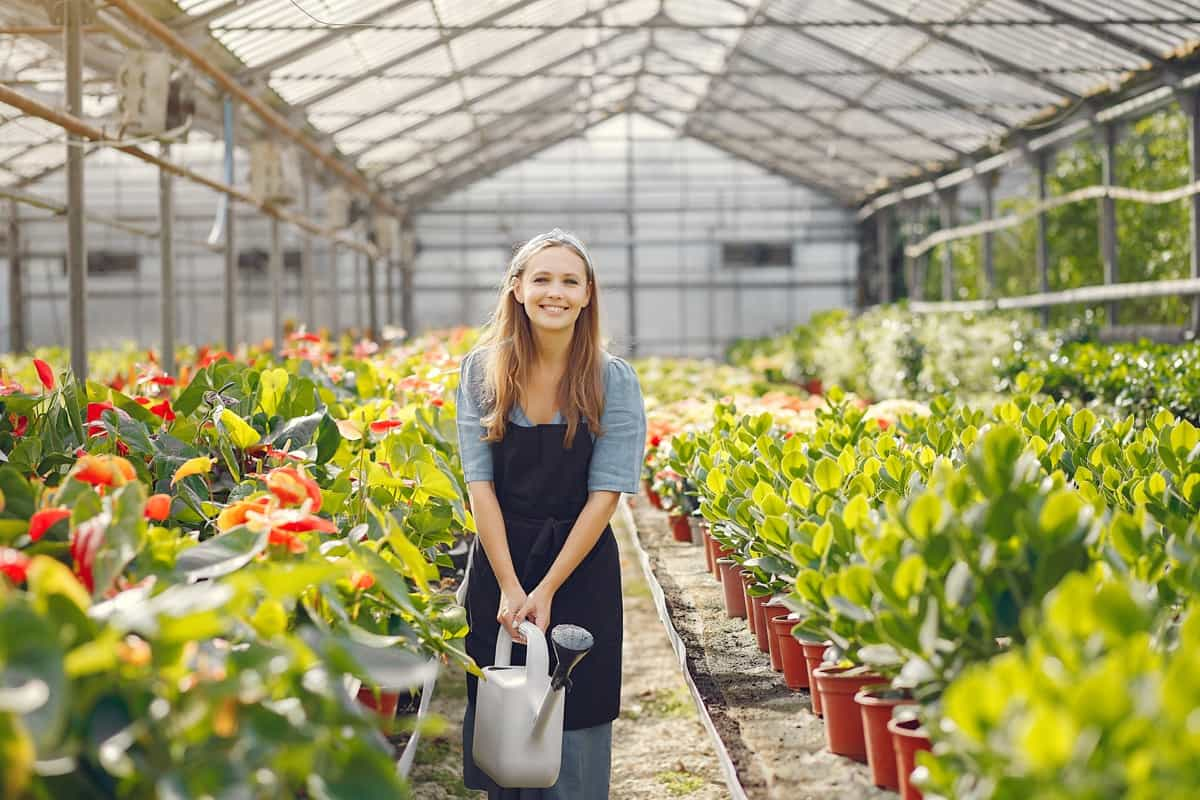
The benefits of Urban Rooftop Greenhouse Growing Systems include reduced environmental impact through local food production and decreased carbon footprint from transportation costs. It also provides access to fresh produce in areas that may not be readily available while promoting healthy eating habits. Furthermore, this method encourages community involvement by turning rooftops into productive spaces that unite people. The use of organic practices promotes sustainability which is essential for future generations.
Urban Microgreen Greenhouse Growing Methods
Microgreens are tiny plants that can be grown anywhere, including urban spaces. They are widely considered a superfood due to their nutrient density and delicious flavor. To grow microgreens in a greenhouse, you will need trays or containers with drainage holes, potting soil or growing medium, seeds, and access to water and light.
Fill the container with moistened soil or growing medium. Spread the seeds and press down gently on them so they have contact with the soil. Place your trays near a source of natural sunlight or artificial lighting if needed. Water your microgreens regularly but avoid overwatering them as this can cause mold growth. Harvest your microgreens when they reach about two inches tall by snipping off the tops using scissors.
Urban Greenhouse Growing for Food Security
Urban greenhouse growth can be an efficient way to increase food production and alleviate food insecurity in cities. With the increasing demand for fresh, healthy, and locally grown produce, urban farming has become essential to many communities’ strategies for achieving food security. By using sustainable practices like hydroponics or aquaponics, urban gardeners can grow more crops than traditional methods would allow with a fraction of the water usage.
Additionally, greenhouse growing allows farmers to control temperature and humidity levels, increasing crop yields. Moreover, Urban Greenhouse Growing provides opportunities for marginalized communities by allowing them access to self-sufficient agriculture; this creates job opportunities while providing affordable, nutritious products within their reach. Urban Greenhouse Growing contributes significantly towards enhancing overall community health through increased access to high-quality, nutritious foods regardless of income status or geographic location within a city.
Aquaponics in Urban Greenhouse Growing
Aquaponics is an innovative method of urban greenhouse growing that combines aquaculture (raising fish) with hydroponics (growing plants in water). This symbiotic system allows for the efficient use of resources, making it ideal for urban spaces. In an aquaponic setup, fish waste provides essential nutrients for plant growth. The plants, in turn, filter and clean the water, which can then be recirculated back to the fish tank. This closed-loop approach minimizes water usage and reduces wastewater discharge into the environment.
One significant advantage of urban greenhouse aquaponics is its ability to utilize vertical space effectively. By stacking grow beds vertically or employing vertical garden structures such as towers or walls, growers can maximize their yield per square foot. Incorporating aquaponic systems into city landscapes brings local food production closer to consumers and helps create a connection between people and their environment through sustainable living practices.
Urban Greenhouse Growing for Sustainable Cities
Urban areas are often synonymous with concrete jungles, making it difficult to find green spaces to grow fruits and vegetables. By utilizing vertical farming techniques within greenhouses in urban areas, you can produce high yields of fresh produce while using less space compared to traditional farming methods.
This helps feed the local community and reduces transportation costs and carbon emissions associated with importing products from outside cities. Additionally, urban greenhouse growth allows for year-round production regardless of weather conditions or geographical limitations. The controlled environment within the greenhouse provides optimal growing conditions for plants, allowing them to thrive without being subject to natural elements such as pests or extreme temperatures.
In case you missed it: Top 30 Vegetables To Grow In A Greenhouse
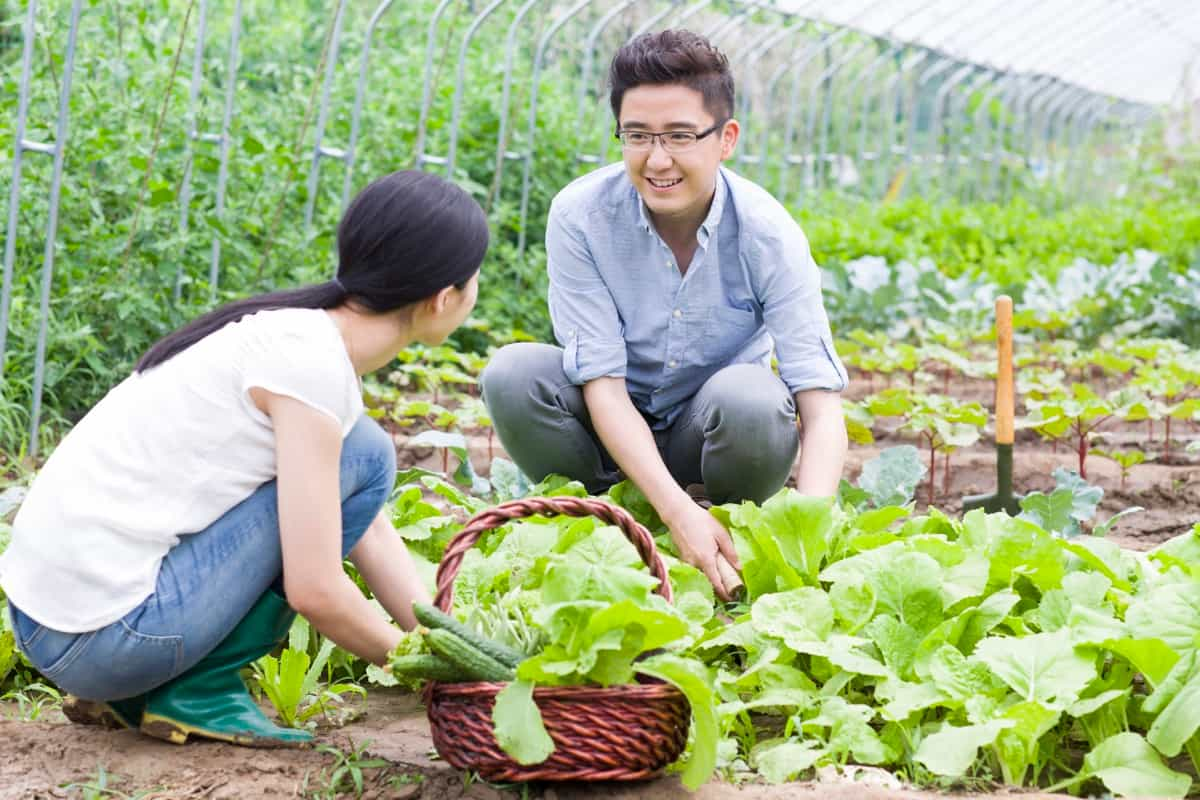
Moreover, by implementing renewable energy sources such as solar panels into the design of these greenhouses, you can significantly reduce their carbon footprint. Urban agriculture has already begun to gain momentum in many cities worldwide through initiatives like rooftop gardens and community gardens; however, large-scale greenhouse projects have yet to be fully realized.
Conclusion
As cities continue to grow and urban spaces become more crowded, the potential for greenhouse growth in these areas becomes increasingly important. Greenhouse gardening offers a sustainable way to produce fresh food, reduce carbon footprints, and improve city air quality.
Various techniques can unlock urban spaces’ potential for greenhouse growth. Greenhouse growing is a fantastic opportunity for urban areas to unlock the potential of their underutilized spaces. Using modern technology and innovative methods, it is now possible to grow crops all year round in an environmentally-friendly way.
- How to Grow Tomatoes Organically at Home: A Comprehensive Guide
- Organic Gardening on a Budget: Low-Cost Methods and Materials
- Gongura Seed Germination and Planting Methods
- Cabbage Seed Germination and Selection
- Broccoli Seed Germination and Selection
- Asparagus Seed Germination and Variety Selection
- Seasonal Flower Gardening: Best Practices for Spring, Summer, Fall, and Winter
- How to Grow Hibiscus from Flower
- Plantation Ideas for Home Decoration: A Beginners Guide
- Flower Garden Designs and Layouts for Beginners
- Planting and Spacing Techniques in Papaya: A Beginner’s Guide
- Growing Gold: Essential Techniques for Planting Pineapples
- How to Make Kalanchoe Plant Bushy: Home Remedies and Solutions
- 11 Reasons Why Your Gardenia is Not Blooming: Home Remedies and Solutions
- Eco Elegance: The Guide to Designing a Drought-Tolerant Landscape
- Gardening on a Slope: Strategies for Hillside Landscaping
- Nourish and Flourish: Top Organic Mulches for Thriving House Plants
- Everything You Want to Know about Indian Mogra Flower: Discover Uses and Growing
- Green Thumb Success: Expert Tips for Cultivating Greenhouse Pumpkins All Year Round
- Maximize Growth & Flavor: The Ultimate Guide to Companion Planting in Herb Gardens
- How to Control Rhododendron Problems Naturally: Home Remedies and Organic Ways to Fix Them
- Natural Magic: The Remarkable Benefits of Cinnamon for Plants
- Best Steps to Revive Dying Tulip with Natural and Organic Treatment
- 10 Reasons Why Your Angel Trumpet is Not Blooming: Remedies and Treatment
- How to Fix Periwinkle Leaf and Flower-Related Problems: Natural Remedies and Solutions
- How to Fix Zinnias Leaf and Flower Problems: Discover Natural and Home Remedies
- Organic Steps to Induce Lemon Tree Flowers: A Comprehensive Guide
- Bloom Booster: Crafting the Perfect Homemade Bougainvillea Fertilizer
- Optimizing Growth: A Guide to Applying NPK Fertilizer for Potted Plants
- 10 Best Homemade Fertilizers for Rubber Plant: DIY Recipes and Application Method
- How to Boost Female Pumpkin Flowers: Effective Steps for More Flowers and High Yields
- Transform Your Indoor Garden: Top Benefits of Pink Salt for Houseplants
- 10 Best Homemade Fertilizers for Peacock Plants (Calathea): Easy DIY Guide
- Unlock Blooms: 9 Reasons Why Your Potted Chrysanthemum is Not Blooming
- 8 Reasons Why Your Potted Hibiscus is Not Blooming: Fix it with Simple Solutions
- Unlock Blooms: 9 Key Reasons Your Potted Frangipani Won’t Flower